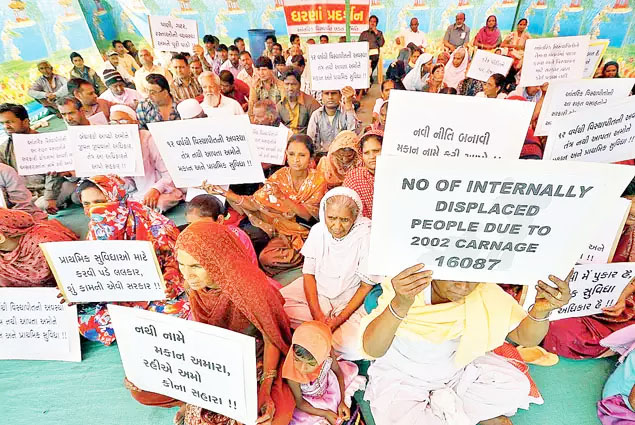By AYESHA FATIMA
Democratic societies, where the distribution of information empowers citizens to form informed opinions, advocate for change, and hold institutions responsible, rely heavily on the media’s ability to shape public opinion. Sensitive problems have generated a lot of public debate in recent years, especially when it comes to social justice and human rights. One such instance that has had a great impact on civil opinion is the recent Kolkata rape case, which highlights the media’s responsibilities and power in shaping societal perceptions.
The horrifying event happened when Dr Moumita Debnath, a resident physician at the R.G. Kar Medical College and Hospital in Belgachia, Kolkata, west Bengal, India went missing on 9 August 2024, and was subsequently discovered dead. At approximately 11:30 am., reports stated that the doctor’s body was discovered partially naked, with her lips, eyes, and genitalia bleeding, in one of the college’s seminar rooms. She subsequently passed away. The doctor was raped before being strangled, according to an autopsy. Her vaginal system, lips, left leg, right hand, ring finger, neck, and face all had serious wounds, according to the findings. Additionally, the postmortem reports disclosed that a vaginal swab containing around 150 mg of semen indicated she had been subjected to gang rape.
Even if there has been progress since the Nirbhaya case, the battle against women violence in India is still ongoing, with the 2024 Kolkata rape case serving as a sobering reminder. Despite being almost ten years apart, the Nirbhaya and Kolkata cases are linked by the continuous fight for justice and equality
The ferocity of crime, combined with the victim’s quest for justice, drew worldwide attention. The media began covering the case extensively as soon as details became available, emphasizing not only the crime but also the structural problems such as police ineptitude, social misogyny, and weak legal frameworks that contribute to such atrocities. The way the case was reported in the media played a significant role in turning it from a small-town tragedy into a national scandal. The use of graphic facts, victim testimony, and public protests raised awareness and incited moral outrage. Social media trends kept the public informed about the case by posting frequent updates and trending hashtags.
The 2024 Kolkata case reminds one of the 2012 Nirbhaya rape case. 16 December 2012, Jyoti Singh, a 22-year-old physio intern was brutally murdered. She was subjected to abuse, including beating, gang rape and torture while riding on a private bus with her male companion, Avindra Pratap Pandey. The woman was raped and her friend was beaten by the six people in the bus, including the driver. Eleven days after the attack, she was flown to Singapore after treatment at Safdarjung Hospital in Delhi, where she passed away two days later from her wounds.
Both in India and elsewhere, the episode drew heavy criticism and received extensive national and international media coverage. The public’s voice was greatly amplified by the media, which made the tragedy a turning point in India’s struggle against gender-based violence.
The problem of women’s safety gained national attention due to the considerable coverage of the Nirbhaya case. Numerous media sites covered the story in-depth, emphasizing both the horrifying nature of the crime and the system’s shortcomings in protecting women. The victim, dubbed “Nirbhaya” (which means “fearless”), went on to become a symbol of the fight against gender-based violence in India.
The 2024 Kolkata case bears striking similarities to Nirbhaya case not only in the nature of crime but also in the public response. In the Nirbhaya case, the media shaped public views and that public outcry led to significant legal and political changes. These included the establishment of fast-track courts, the Nirbhaya Fund, and the Criminal Law(Amendment) act of 2013. The Criminal act also known as Nirbhaya Act was one of the most significant legislative responses to the Nirbhaya tragedy. This legislation, which was largely focused on enhancing the legal framework to prevent sexual offenses and assure victim protection, significantly altered the Indian Penal Code (IPC), the Code of Criminal Procedure (CrPC) and the Indian Evidence Act.
A precedent for how the media could shape public opinion and promote social change was established by the Nirbhaya case. It proved that consistent media coverage could result in observable changes to the law and increased public knowledge of gender-related issues. The Kolkata case carries on this tradition by demonstrating the media’s ongoing potency as a weapon for promoting justice and structural change. Many hashtags are circulating throughout the international platforms like #JusticeForMoumita, #KolkataRapeAndMurderCase, #ViolenceAgainstWomen, #JusticeForWomen and many more. Not only this but due to the media this incident has come under international scrutiny. Nationwide protests are being carried out by Indian doctors. Feminist groups rallied on the streets in protests titled “Reclaim the night” in Kolkata on the eve of Indian Independence Day.
The role of media here is important because due to media coverage or social media people get to understand the exact facts instead of the statements made by the officials by having an ostrich approach to the crime. For the daughters of India, every day means a rape every 16 minutes, 86 rape cases daily, 99 percent offenders go unpunished daily with many more going unreported daily. According a report 21 rape cases have been reported in India in 10 days from august 9 to august 18. These are the cases which are reported by either the victims, or their families or by any acquaintances. But there are hundreds of cases which get unnoticed because people do not want to highlight their adversity. In many cases these assaults are recorded and then are used to blackmail the victims to keep their mouth shut.
This issue is not new. According to the report of NCRB in 2022, 90 such heinous crimes take place daily. Capital punishment will block the way of these kinds of culprits. The role of media in the 2024 Kolkata rape case has multiple dimensions. Media focused on tiny or specific details, gave every evidence a sense of perception that the people followed, leading to less authentication in the case. As media have potential so where it can guide you for the truth, there it can perpetuate opinions that can cause hindrances in the judicial proceedings.
Even if there has been progress since the Nirbhaya case, the battle against women violence in India is still ongoing, with the 2024 Kolkata rape case serving as a sobering reminder. Despite being almost ten years apart, the Nirbhaya and Kolkata cases are linked by the continuous fight for justice and equality.
The writer is a freelance columnist





















